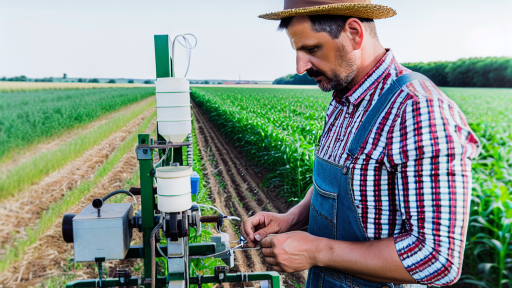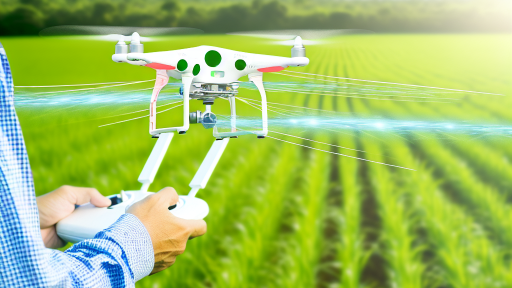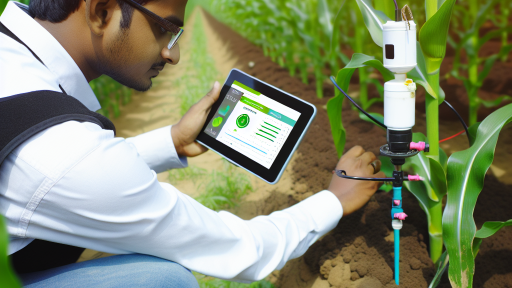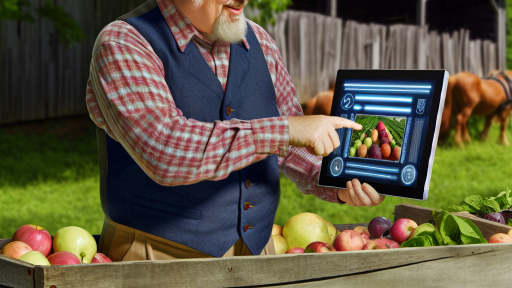Introduction
Traditional farming practices have served humanity for centuries.
Farmers relied on manual labor and basic tools to cultivate crops.
This approach, while sustainable, presents several limitations.
Farmers face challenges such as labor shortages, inconsistent crop yields, and environmental sustainability.
These issues hinder overall agricultural productivity.
The evolution of technology has gradually transformed agriculture.
Innovations such as mechanization and chemical fertilizers improved efficiency significantly.
However, these advances still fell short of addressing all farming challenges.
As the global population grows, the demand for food increases exponentially.
Therefore, farmers need more effective solutions to meet these needs.
Robotics emerged as a revolutionary force in modern farming.
This technology now plays a crucial role in the agricultural landscape.
Farmers increasingly adopt robotic systems to streamline operations and enhance productivity.
Robotics offers precision farming techniques that minimize waste and maximize yields.
Autonomous vehicles, such as drones and self-driving tractors, are changing how farms operate.
Transform Your Agribusiness
Unlock your farm's potential with expert advice tailored to your needs. Get actionable steps that drive real results.
Get StartedThese machines gather data on crop health, soil conditions, and weather patterns.
With real-time information, farmers can make informed decisions about resource allocation.
Consequently, they can reduce costs while increasing efficiency.
Additionally, robotic systems perform tasks that are labor-intensive and time-consuming.
Harvesting fruits and vegetables, for example, can be done by sophisticated robotic arms.
These robots work tirelessly, ensuring that crops are picked at the optimal time.
By doing so, they help enhance product quality and reduce spoilage.
Furthermore, robotic technology assists in pest management and crop monitoring.
Robots equipped with AI analyze crops for signs of disease or pest infestations.
This timely intervention allows farmers to treat only affected areas, saving resources and protecting the environment.
Robotics is redefining modern farming practices.
This technology addresses many limitations of traditional methods.
By enhancing productivity, sustainability, and efficiency, robotics sets the stage for the future of agriculture.
Understanding Agricultural Robotics
As technology advances, so does the field of agriculture.
Agricultural robotics offers innovative solutions to age-old farming problems.
This dynamic field encompasses various machines designed to operate in farming environments.
Understanding agricultural robotics requires defining what it encompasses.
Definition and Categories of Agricultural Robots
Agricultural robots are automated machines that perform specific agricultural tasks.
They help improve efficiency, productivity, and sustainability in farming practices.
Key categories of agricultural robots include:
- Drones: Used for monitoring crops, mapping fields, and assessing plant health.
- Automated Tractors: These tractors drive autonomously, handling tasks like planting and tilling.
- Harvesters: Robots designed to pick fruits and vegetables with precision and speed.
- Weeding Robots: These machines identify and remove weeds, reducing the need for chemicals.
- Livestock Robots: Robots that assist with feeding, milking, and monitoring livestock health.
Historical Development of Robotics in Agriculture
The journey of robotics in agriculture dates back many decades.
Early innovations began in the mid-20th century.
Farmers used mechanized machines to replace manual labor.
The introduction of tractors transformed agricultural practices by increasing tillage efficiency.
Showcase Your Farming Business
Publish your professional farming services profile on our blog for a one-time fee of $200 and reach a dedicated audience of farmers and agribusiness owners.
Publish Your ProfileOver the years, technology improved significantly.
The 1980s and 1990s marked the arrival of computer technology in farming.
Farmers began utilizing GPS technology for precision agriculture.
This led to better resource management and crop yield optimization.
As technology continued to evolve, the concept of robotics took shape.
By the early 2000s, various robotic machines began entering the agricultural sector.
These advancements allowed farmers to automate simple tasks and focus on strategic planning.
Current State of the Technology: Capabilities and Features
Today’s agricultural robots possess incredible capabilities.
Modern technologies enable these machines to perform tasks with remarkable precision.
Some essential features of current agricultural robots include:
- Autonomy: Many robots operate independently, requiring minimal human intervention. They navigate using advanced sensors and artificial intelligence.
- Data Analysis: Robots collect valuable data from fields, analyzing soil health, moisture levels, and crop status. This information assists farmers in making informed decisions.
- Multi-functionality: Some robots can perform a variety of tasks, such as planting, watering, and harvesting. This versatility decreases the need for multiple machines.
- Integration with IoT: Many agricultural robots connect to the Internet of Things (IoT). This connectivity allows for real-time monitoring and data sharing across devices.
- Durability: Modern robots are designed to withstand harsh agricultural environments. They feature robust construction to ensure longevity.
As agriculture faces increasing demands, robotics offers solutions.
Farm workers can enhance productivity and streamline operations.
By implementing these technologies, farmers can tackle labor shortages and rising costs.
The technological landscape is rapidly changing, as innovations constantly enter the market.
Startups and established companies alike invest heavily in agricultural robotics.
They focus on improving functionality, efficiency, and ease of use.
Farmers can harness the power of robotics to optimize their practices.
With the right technology, they can monitor their crops and manage resources better.
The effective use of agricultural robots can lead to significant gains in productivity.
Potential Impact on Modern Farming
Understanding agricultural robotics requires a closer look at its definition, categories, historical development, and current capabilities.
As this technology continues evolving, it holds the potential to revolutionize modern farming practices.
By embracing innovation, farmers can build a more sustainable and productive agricultural future.
Enhancing Efficiency Through Automation
Robotics has fundamentally changed modern farming practices.
This transformation leads to significant increases in yield and efficiency.
In this section, we explore how robotics automates essential farming tasks:
- Planting: Robotics can plant seeds with exceptional precision, ensuring optimal spacing and depth.
- Watering: Automated irrigation systems monitor moisture levels and deliver water exactly where needed.
- Harvesting: Robotic harvesters can pick ripe produce without damaging plants or crops.
Case Studies Showcasing Increased Productivity
Numerous case studies underline the benefits of robotics in farming.
One notable example occurs in the strawberry farming sector.
Farmers in California adopted robotic harvesters, significantly boosting their productivity.
- After implementing the robots, farmers reported a 30% increase in harvesting speed.
- Labor costs decreased by 50% as fewer workers were needed for manual tasks.
- Overall, farms were able to harvest more fruit during peak seasons, leading to enhanced profitability.
Another example can be seen in grape vineyards.
With robotic assistance, vineyards achieved:
- A reduction in manual labor hours by 40%.
- Improved grape quality due to uniform pruning practices.
- A boost in overall production efficiency, leading to a better return on investment.
The Concept of Precision Farming
Precision farming transforms farming into a science.
This data-driven approach provides farmers with actionable insights.
Robotics plays a crucial role in this process:
- Data Collection: Drones and ground-based robots collect data on crop health, soil quality, and weather conditions.
- Data Analysis: Advanced software analyzes this data to optimize resource allocation and improve crop management.
- Decision-Making: Farmers can make timely decisions based on real-time data, enhancing productivity and sustainability.
For example, a corn farmer using precision farming technology can monitor his field’s conditions in real time.
Some benefits include:
- A 15% reduction in fertilizer usage.
- A significant decrease in water consumption by 20%.
- Enhanced crop yields, resulting in up to 30% more corn produced per acre.
The Future of Robotics in Farming
The future of robotics in farming looks promising.
Potential developments include:
- Autonomous Farm Equipment: Fully autonomous tractors and harvesters could take over many farming tasks.
- AI Integration: Enhanced AI will enable robots to make decisions based on environmental feedback.
- Collaborative Robotics: Robots and humans working together for enhanced efficiency and productivity.
This means that farmers can expect even greater efficiency gains in the future.
Innovations will allow for better use of resources and improved sustainability practices.
Robotic applications also diversify into areas like poultry farming and aquaculture.
Showcase Your Farming Business
Publish your professional farming services profile on our blog for a one-time fee of $200 and reach a dedicated audience of farmers and agribusiness owners.
Publish Your ProfileRobotics Revolutionizing Modern Farming
Robotics is revolutionizing modern farming practices through increased efficiency and productivity.
Farming tasks such as planting, watering, and harvesting become automated, reducing the need for labor.
Case studies demonstrate how these innovations lead to substantial gains in productivity and reduced costs.
Precision farming represents a data-driven future, allowing farmers to make informed decisions.
As technology continues to evolve, the potential for robotics in agriculture grows exponentially.
Farmers now have the tools to enhance their practices, ensuring sustainable and efficient food production for future generations.
Delve into the Subject: How AI Is Helping Farmers Predict Crop Failures Before They Happen
Safety and Environmental Impact
Robotics play a pivotal role in modern agriculture.
They enhance safety and address environmental concerns.
By integrating robotics into farming, we can minimize human error and improve conditions for farm workers.
Minimizing Human Error and Improving Safety
Human error remains a significant issue in agriculture.
Mistakes can lead to injuries, crop damage, and financial loss.
Robotics significantly reduce these risks through various means:
- Automated Equipment: Robots automate repetitive tasks like planting and harvesting. This reduces the likelihood of accidents caused by fatigue.
- Precision Tasks: Robots handle tasks with high precision, such as spraying pesticides. This minimizes exposure to hazardous substances for workers.
- Real-time Monitoring: Drones and robotic systems monitor crops and livestock continuously. This allows for quick responses to potential issues, thus enhancing safety.
- Controlled Environment: Robots operate in controlled environments, such as greenhouses. This limits worker exposure to unfavorable weather and harsh conditions.
By employing robotic technologies, farms reduce onsite accidents.
Improved safety protocols lead to a healthier work environment.
As a result, workers can focus on more critical thinking tasks.
Use of Robots for Sustainable Farming Practices
Sustainable farming practices are vital in today’s world.
Robotics can dramatically impact how farms manage resources.
By utilizing technology, farms can enhance sustainability through:
- Precision Agriculture: Robots deliver resources more accurately. For example, they can apply fertilizers only where needed, reducing waste.
- Water Management: Automated irrigation systems ensure optimal water usage. This minimizes overwatering, conserves water, and prevents runoff.
- Reduce Chemical Use: Robots can apply pesticides and herbicides more effectively. This targeted approach reduces chemical runoff and lessens harm to the environment.
- Soil Health: Some robots work to aerate and condition the soil. Maintaining soil integrity supports healthier crop growth without chemical interventions.
Robotics facilitate precision in agriculture.
These innovations lead to better resource management while promoting sustainable practices.
Ultimately, they help farmers produce more with less environmental impact.
Environmental Footprint of Robotic Farming Compared to Traditional Methods
The environmental footprint of farming changes significantly with robotics.
While traditional farming methods often consume vast amounts of resources, robotics help streamline those processes.
Here’s how:
- Energy Efficiency: Robots often operate on renewable energy sources. This decreases reliance on fossil fuels compared to machinery that runs on gasoline or diesel.
- Reduced Soil Disturbance: Robots can minimize soil compaction and disturbance. This preserves soil structure and nurtures healthy ecosystems beneath the surface.
- Lower Carbon Emissions: Autonomous machines emit fewer greenhouse gases. Reduced emissions contribute to combating climate change effects.
- Biodiversity Promotion: Robots can help monitor and protect wildlife habitats on farm properties. This enhances biodiversity and encourages healthy ecosystems.
Research shows that robotic agriculture can significantly lower the environmental footprint of farming.
In contrast, conventional methods often lead to increased pollution and resource depletion.
Thus, integrating robotics helps farmers work in harmony with nature.
Challenges and Considerations
Despite the numerous benefits, challenges exist in adopting robotics.
Farmers must navigate several factors when implementing these technologies.
Important considerations include:
- Initial Costs: Investment in robotic technology can be substantial. Many farmers may struggle to secure funding for advanced equipment.
- Technical Training: Introducing robotics requires training workers. Knowledgeable staff is crucial to ensure technology operates smoothly.
- Maintenance Needs: Robotic systems require regular maintenance. Farmers need a strategy for the upkeep of their machines.
- Regulatory Compliance: Farmers must ensure all robotic operations comply with local regulations. Navigating these laws can be complex.
These challenges cannot overshadow the benefits of robotic farming.
However, recognizing and addressing them is essential to ensure smooth transitions.
Collaborative efforts among farmers, technology developers, and policymakers can help surmount these barriers.
Robotics Revolutionizing Farming Practices
Robotics revolutionize modern farming practices and create safer and more sustainable environments.
By minimizing human error and environmental impacts, robots hold the key to a brighter agricultural future.
With continued advancements, farming practices will become increasingly efficient, secure, and eco-friendly.
As technology evolves, so too does the potential for sustainable agriculture.
Embracing robotics in farming can lead to a harmonious balance between production and environmental stewardship.
The future of farming depends on our ability to innovate and adapt to these new technologies.
Showcase Your Farming Business
Publish your professional farming services profile on our blog for a one-time fee of $200 and reach a dedicated audience of farmers and agribusiness owners.
Publish Your ProfileUncover the Details: How Drone Technology Is Monitoring the Future of Crop Yields
Data Collection and Analysis
The integration of robotics and big data has transformed agriculture significantly.
Farmers rely on precise data to make informed decisions.
This section explores how robots gather essential data and how this enhances modern farming practices.
The Intersection of Robotics and Big Data in Agriculture
Big data plays a crucial role in agriculture today.
Robotics facilitates the collection and analysis of this data.
Together, they improve farming efficiency and productivity.
Here are several ways this intersection proves beneficial:
- Automation of Data Collection: Robots continuously gather data without human intervention.
- Real-Time Monitoring: Sensors on robots provide immediate feedback on environmental conditions.
- In-depth Analysis: Data collected can reveal patterns and trends over time.
- Integration of Technologies: Robotics connects with IoT devices for comprehensive data analysis.
- Scalability: Farmers can scale data collection efforts across vast tracts of land.
This combination of robotics and big data empowers farmers to make timely decisions.
It allows them to respond swiftly to changing conditions in their fields.
How Robots Gather Real-Time Data
Robots equipped with advanced sensors play a vital role in data collection.
They monitor multiple parameters crucial for successful farming.
Key areas of focus include:
- Soil Health: Robots analyze soil composition, moisture levels, and nutrient content.
- Crop Growth: Drones and ground-based robots assess plant health and growth stages.
- Pest Detection: Robots identify pests through visual and thermal imaging technologies.
- Weather Conditions: Sensors measure temperature, humidity, and precipitation levels.
Through these methods, robots provide farmers with real-time insights.
Immediate access to data enables quick reactions to issues as they arise.
This could mean irrigating thirsty crops or applying pesticides against invasive pests.
Benefits of Data Analytics in Enhancing Yields
Data analytics derived from robotic observations offers several advantages.
Farmers can leverage this information to increase yields and optimize practices.
The benefits include:
- Enhanced Decision-Making: Accurate data guides farmers in making strategic choices.
- Predictive Analytics: Farmers can forecast yields based on current data trends.
- Resource Optimization: Data helps minimize waste of water, fertilizers, and pesticides.
- Customized Solutions: Farmers tailor interventions based on specific data for each field.
- Improved Crop Management: Analytics inform planting schedules and post-harvest processes.
Incorporating analytics into decision-making processes encourages sustainable farming.
As farmers become increasingly data-driven, they contribute to environmental conservation.
Future Prospects of Robotics and Data in Agriculture
As technology advances, the role of robotics in agriculture will expand even further.
Next-generation robots will collect even more precise data.
Potential advancements for the future include:
- Artificial Intelligence Integration: AI can enhance data interpretation and predictive capabilities.
- Collaborative Robots: Multiple robots may work together to collect comprehensive data across large areas.
- Advanced Data Aggregation: Streamlined platforms will analyze data from various sources efficiently.
- Enhanced User Interfaces: Simplified dashboards will make data interpretation accessible for all farmers.
- Cost Reduction: As robotics technology matures, the cost will likely decrease, increasing accessibility.
The future of robotics and data in agriculture promises exciting developments.
These technologies will continue to improve crop quality and yield.
They will also promote sustainable practices that minimize environmental impacts.
Challenges and Considerations
Despite the advantages, several challenges exist in implementing robotic data collection in agriculture:
- High Initial Investment: The cost of robotic equipment can be prohibitive for small-scale farmers.
- Technical Knowledge: Farmers may require training to effectively use these technologies.
- Data Privacy Concerns: Collecting data raises questions about ownership and usage rights.
- Maintenance and Repair: Regular upkeep of robotic systems is essential for optimal performance.
- Integration with Existing Systems: New technologies must fit within current farming practices.
Addressing these challenges will be crucial for the widespread adoption of robotics in agriculture.
Stakeholders must work together to find solutions that benefit all parties involved.
The Transformative Impact of Robotics and Data in Agriculture
The role of robotics in data collection and analysis has revolutionized modern farming practices.
Farmers benefit from real-time data, predictive analytics, and optimized resource usage.
As technology evolves, robotics will continue to shape the future of agriculture.
Embracing these innovations will lead to sustainable practices and increased food security worldwide.
Find Out More: Revolutionary Tech Transforming the Future of Farming
Economic Implications for Farmers
Cost Analysis of Integrating Robotics into Farming Operations
Integrating robotics into farming involves significant costs.
Farmers need to consider various factors when estimating these expenses.
Initial costs include purchasing robotic equipment.
Moreover, the maintenance and support for these systems add to the financial burden.
- Robot Purchase Prices: Robotic systems can range from a few thousand to hundreds of thousands of dollars.
- Training Costs: Farmers may require specialized training to operate and maintain robotic systems effectively.
- Maintenance Expenses: Regular maintenance ensures the longevity of robotic equipment but incurs additional costs.
- Software Licensing Fees: Many robotic systems rely on software requiring ongoing updates and fees.
Long-Term Financial Benefits: Increased Profitability and Market Competitiveness
Once farmers overcome initial costs, robotics can significantly enhance profitability.
Showcase Your Farming Business
Publish your professional farming services profile on our blog for a one-time fee of $200 and reach a dedicated audience of farmers and agribusiness owners.
Publish Your ProfileThese systems boost yields through precision farming and reduced waste.
Robotics streamline labor-intensive processes, allowing farmers to allocate resources more effectively.
- Higher Crop Yields: Robotics can optimize planting, watering, and harvesting processes.
- Reduced Labor Costs: Automation minimizes the need for manual labor, lowering overall labor expenditures.
- Faster Operations: Robotics can execute tasks more quickly than human laborers, increasing productivity.
- Improved Crop Quality: Precise monitoring and handling lead to better-quality produce and fewer losses.
As a result, farmers using robotics maintain a competitive edge.
They can operate more efficiently at lower costs, positioning themselves favorably in the market.
Increased automation allows farmers to respond swiftly to consumer demands and market trends.
Discussion on the Initial Investment vs. Long-Term Savings and Productivity Gains
When considering robotics, farmers must weigh initial investments against long-term savings.
The higher upfront costs can deter some from adopting this technology.
However, analyzing long-term savings paints a different picture.
- Increased Efficiency: Robotic systems optimize processes that traditionally waste time and resources.
- Data-Driven Decisions: Robotics equipped with sensors provide valuable data, aiding in smarter farming decisions.
- Operational Scalability: Robots allow farms to scale operations without significantly increasing labor costs.
- Flexible Work Hours: Robotics can work around the clock, allowing for faster completion of tasks without worker constraints.
Overall, farmers need to consider their unique circumstances when deciding to invest in robotics.
Each farm’s operational model and scale influence how these systems will impact financial outcomes.
The transition to robotics is not merely about technology; it’s about rethinking farm management challenges holistically.
Implications for Future Farming Practices
The economic implications of robotics in farming are profound.
While initially daunting, the costs of robotic systems are often offset by significant long-term benefits.
Farmers who embrace robotic technology position themselves for improved profitability and competitiveness.
Strategic investment in robotics can lead to remarkable operational efficiencies, enhancing both productivity and sustainability.
By addressing the challenges associated with the initial investment, farmers can harness robotics’ full potential.
Preparing to adopt these technologies can determine their success in an increasingly competitive marketplace.
Ultimately, the future of farming may hinge on a farmer’s willingness to invest in automation and embrace change.
Gain More Insights: Vertical Farming: Agri-Tech’s Rising Star
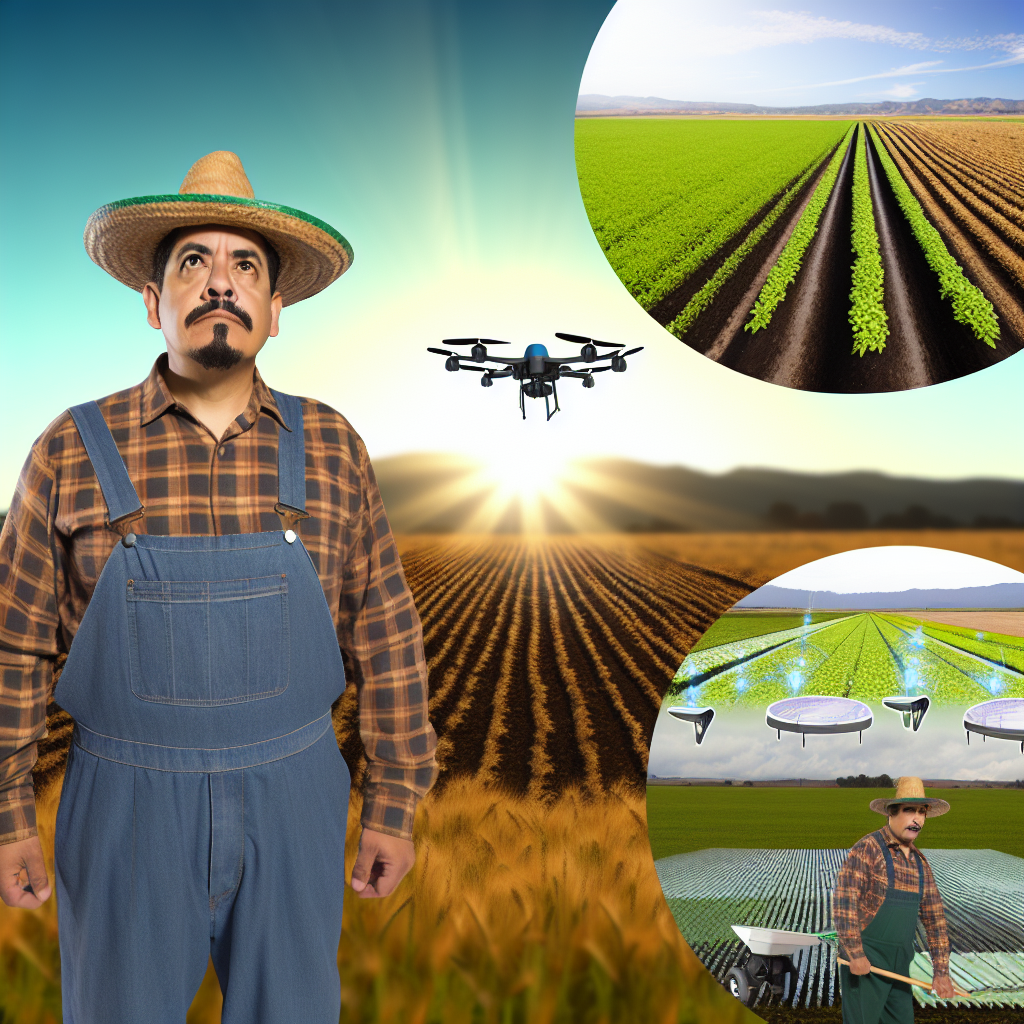
Challenges and Limitations of Agricultural Robotics
While robotics offers immense potential to revolutionize farming.
Several challenges remain formidable.
Understanding these challenges is crucial for both farmers and technologists.
Technological Barriers
Successful implementation of robotic solutions faces various technological challenges.
These barriers can significantly hinder progress in the agricultural sector.
- Complexity of Systems: Agricultural robots require sophisticated software and hardware solutions. This complexity necessitates extensive technical knowledge for effective deployment.
- Integration with Existing Systems: Many farms depend on traditional machinery. Integrating robotic solutions with these systems can pose logistical difficulties.
- Maintenance Requirements: Regular maintenance is necessary for optimal robot performance. Farmers must allocate resources and time to service these machines.
- Data Management Challenges: Robotics and automation generate vast amounts of data. Efficiently managing this data presents challenges for farmers.
- Dependence on Connectivity: Many agricultural robots require reliable internet connections. In remote or rural areas, connectivity can be inconsistent or entirely lacking.
Financial Concerns
Financial considerations significantly impact the adoption of agricultural robotics.
Particularly among small-scale farmers, addressing these concerns is vital for widespread adoption.
- High Initial Investment: The upfront costs of robotic equipment can be substantial. Many farmers struggle to justify these expenses.
- Cost of Maintenance and Repairs: Ongoing maintenance costs can quickly add up. Farmers must budget for repairs to keep machines operational.
- Access to Financing: Many small-scale farmers lack access to affordable financing options. Limited funding can deter them from investing in robotics.
- Return on Investment Concerns: Farmers often question whether robotic investments will pay off. Uncertain financial returns can lead to hesitation in adopting technology.
- Market Competition: The agricultural market continuously evolves, impacting financial viability. Increased competition could narrow profit margins for farmers using robotics.
Potential Job Displacement
As robots automate agricultural tasks, concerns about job displacement arise.
While robotics can enhance productivity, they can also eliminate certain jobs.
- Automation of Repetitive Tasks: Robotics can replace labor-intensive and repetitive jobs. This shift poses a risk to workers in traditional roles.
- Shifts in Labor Demand: The rise of automation alters the job market. Farmers may need fewer hands for specific tasks, affecting overall employment.
- Need for Workforce Reskilling: Workers may require upskilling to thrive in a technology-driven environment. Reskilling programs need to be accessible and effective.
- Economic Inequality Risks: Job displacement can contribute to economic inequality. Low-skilled workers may find it challenging to transition into new roles.
- Community Impact: High unemployment in rural areas can undermine local economies. Robotic adoption must consider its broader societal implications.
Addressing these challenges is crucial for farmers and technologists alike.
Only through a coordinated effort can the agricultural sector fully embrace the benefits of robotics.
Let us prioritize understanding, collaboration, and innovation in agricultural robotics.
Future Trends in Farming Robotics
As technology rapidly advances, farming robotics stand at the forefront of a productivity revolution.
Innovations in artificial intelligence (AI), machine learning, and the Internet of Things (IoT) shape this transformation.
The integration of these technologies enhances efficiency, sustainability, and crop yields in agriculture.
Innovations on the Horizon: AI, Machine Learning, and IoT Integration
The agriculture sector embraces new ideas.
Here are several prominent innovations transforming farming practices:
- AI-Powered Decision Making: AI systems analyze vast data sets. They help farmers make informed choices about planting, watering, and harvesting crops.
- Machine Learning for Predictive Analytics: Machine learning enables predictive models. These models forecast weather patterns and pest outbreaks. Farmers can thus take preventive measures in advance.
- IoT Devices for Precision Agriculture: IoT devices collect real-time data from fields. This data guides farmers in managing resources efficiently. Remote sensing allows for better monitoring of plant health.
- Autonomous Equipment: Farm equipment continues to evolve toward automation. Self-driving tractors and robotic harvesters reduce the need for manual labor. They can operate with minimal human intervention.
- Data-Driven Farming Solutions: Advanced analytics and cloud computing lead to smarter farming. Collecting and analyzing data enables farmers to optimize their operations.
These innovations create a more connected agricultural ecosystem.
The synergy between these technologies promotes sustainable farming while maximizing yields and minimizing waste.
Predictions for the Evolution of Farming Practices
Experts predict several key changes as robotic technology evolves:
- Increased Adoption of Autonomous Machinery: Farmers will increasingly use autonomous machines. They will automate routine tasks, leading to increased productivity.
- Enhanced Crop Management: With AI, farmers will improve crop management practices. Real-time analysis allows for targeted treatments and resource management.
- Sustainable Practices: Robotics will help promote sustainability. Precision farming reduces chemical usage and optimizes water resources.
- Labor Savings: The adoption of robots will alleviate labor shortages. Farmers can maintain productivity even as fewer workers enter the field.
- Smart Supply Chains: Integrated technologies will develop smarter supply chains. This ensures that farmers receive timely market information and reduce waste in food distribution.
These predictions reveal a vision where technology and farming coalesce.
Showcase Your Farming Business
Publish your professional farming services profile on our blog for a one-time fee of $200 and reach a dedicated audience of farmers and agribusiness owners.
Publish Your ProfileFarmers will operate in more efficient, responsive, and sustainable ways.
The Potential for Global Agricultural Transformation and Food Security Enhancement
The advancements in farming robotics offer significant potential for global transformation:
- Global Food Production Increase: With enhanced yields, robotics can significantly raise food production levels. This addresses the growing global population’s needs.
- Improved Food Quality: Robotics can maintain high-density planting while enhancing crop quality. More uniform crops can increase marketability.
- Climate Resilience: Robotics enable adaptive farming strategies. This flexibility aids crops in surviving extreme weather conditions.
- Resource Conservation: Smart technologies minimize resource wastage. Efforts to conserve water and soil fertility become more effective.
- Economic Opportunities: Farming robotics foster new economic avenues. New jobs will emerge in technology, programming, and machinery maintenance.
As countries increasingly adopt these technologies, robotics in agriculture can reshape food security.
The global agricultural landscape stands to benefit immensely from this transformation.
The future of farming robotics appears bright.
The integration of AI, machine learning, and IoT heralds an era of agricultural innovation.
This can enhance productivity while addressing pressing global challenges.
Farmers who embrace these technologies will remain competitive and resilient.
They will lead the way in producing food sustainably for generations to come.
As we look forward to this revolution, the role of robotics will undeniably revolutionize modern farming practices.
Implications of Robotics in Modern Agriculture
Robotics has fundamentally transformed modern farming practices.
These advancements enhance efficiency, productivity, and sustainability.
Farmers can now complete tasks faster with greater precision.
Automated systems reduce the need for labor, minimizing operational costs.
Drones monitor crop health, while autonomous tractors streamline planting and harvesting.
Embracing technology becomes essential as the agricultural sector faces challenges.
Climate change and population growth demand innovative solutions.
By adopting robotics, farmers can optimize resource use and reduce environmental impact.
Precision farming techniques enable better soil management and efficient water use, leading to healthier crops.
However, this transition raises important challenges.
Farmers must invest in new technologies, leading to financial considerations.
Training is necessary to ensure that workers can operate advanced machinery.
Additionally, rural connectivity remains a barrier to fully realizing robotics’ potential.
To navigate these challenges, collaboration is vital.
Farmers, policymakers, and technology developers must work together.
Policymakers should create incentives for adopting agricultural technologies.
They should also support education and training initiatives in rural areas.
Technology developers must prioritize user-friendly innovations.
They should design solutions that cater to the specific needs of farmers.
Engaging with the farming community can foster solutions that are practical and effective.
The future of agriculture hinges on sustainable practices.
Robotics holds the promise of revolutionizing crop production and food distribution.
Together, stakeholders can harness this potential to shape a viable agricultural landscape.
Let’s unite towards a more efficient, resilient, and sustainable farming future.
Additional Resources
Precision Agriculture: Benefits and Challenges for Technology …

